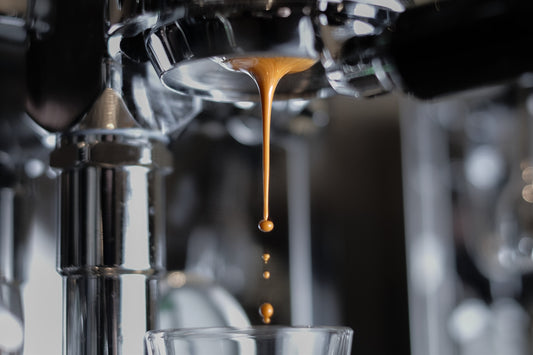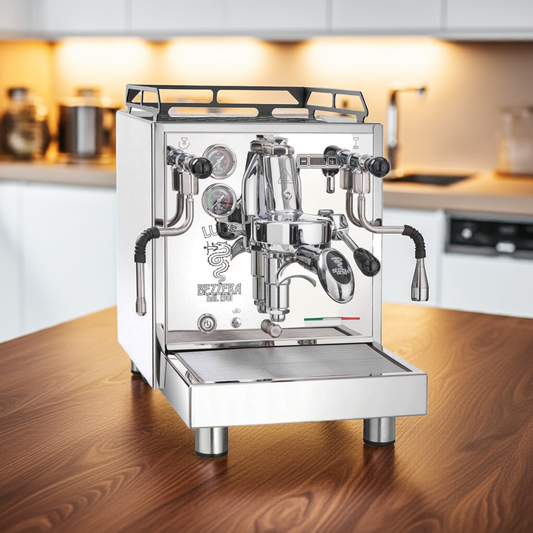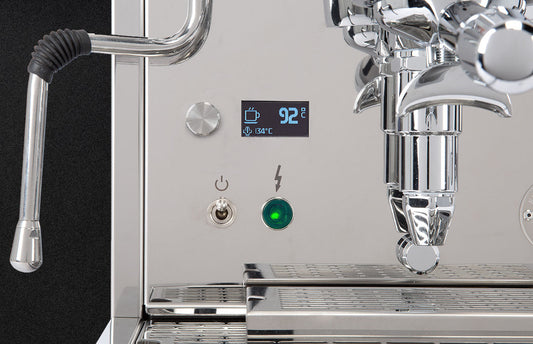The coffee grinder is the key to preparing aromatic coffee and espresso. Once ground, the coffee beans lose much of their aroma in a very short time. Learn more about what's important in a coffee or espresso grinder here.
Freshly ground with your own coffee grinder
Everyone knows and loves the aroma of freshly ground coffee. To ensure that as much aroma as possible ends up in the cup and not in the air, it's important to always grind the coffee beans as close to the time of brewing as possible. After just 30 minutes, ground coffee has lost half its aroma. The grinder plays a particularly important role in espresso preparation, because for a perfect espresso, the grind size must be very finely adjustable to achieve exactly the right flow rate.
Having your own coffee grinder is virtually indispensable for making espresso and should be included in your budget right from the start when considering buying a machine.
The hand mill - grind coffee like grandma did
Everything was better in the old days – this much-maligned platitude is sometimes true. A (hand) coffee grinder can be found in almost every kitchen. Almost everyone knows the "Zasshaus" with its typical wooden casing, but unfortunately, it's rarely found these days, or if so, as decoration rather than as an everyday object. For filter coffee, a hand grinder is still a good choice; the Japanese coffee manufacturer HARIO, in particular, offers high-quality models at a completely fair price. For the fine grind required for a portafilter espresso machine, the hand grinder becomes a real task. If it even achieves the required grind, a mid-three-digit number of revolutions is required, which will quickly get your biceps in top shape.
Electric coffee grinders = espresso grinders?
Queen of coffee grinders - The espresso grinder
A coffee grinder for espresso preparation is a precision tool. The burrs feature a geometry that delivers a perfect balance of very fine, medium, and coarse particles. Grinders are available with flat and conical burrs. A continuous grind adjustment ensures that the precise "sweet spot" can be achieved.
Flat grinding discs
Most espresso grinders have flat burrs with a diameter between 50mm and 83mm. Depending on the grinder, either the upper or lower burr is permanently attached to the housing. The other burr is connected to the motor via a shaft and rotates during the grinding process.
Conical grinding discs
Conical burrs are conical and taper downwards. Conical burrs have the advantage of having less dead space and a larger effective contact area between the espresso bean and the burr.
Precise adjustment
To achieve the perfect combination of acidity and bitterness in espresso, a precise grind setting is required. If the espresso is brewing too quickly, the grind needs to be finer; if it's brewing too slowly, a coarser setting is needed. Ideally, these adjustments can be minimal; if the grind setting is divided into increments, the perfect grind may fall exactly between two settings.
Timer - Time setting for better reproducibility
High-quality espresso grinders often have a timer. Using a timer, you can program the amount of coffee for single and double extractions. Once you've found the ideal combination of grind size and amount, you can program the timer accordingly. The grinder will then always grind for the preset time.
The right grinder for your espresso machine
For espresso machines with vibrating pumps, espresso grinders up to approximately 55mm are recommended. For espresso machines with rotary pumps, the burrs should be at least 55mm, though 63mm or larger is better.




